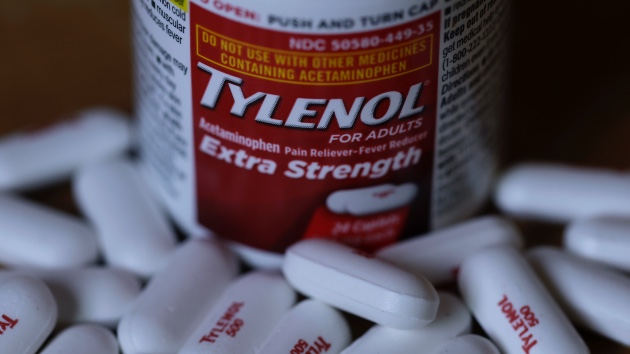How to stay safe and prepare for freezing temperatures
Written by ABC Audio ALL RIGHTS RESERVED on January 12, 2024

(NEW YORK) — Break out the gloves and hats: Dangerously cold temperatures are headed to the Plains and the South over the weekend and early next week.
Sioux City, Iowa, could fall to a bone-chilling minus 20 degrees on Sunday, tying its all-time record low temperature.
The temperature in Dallas is forecast to drop to a record 14 degrees on Monday.
Shreveport, Louisiana, is expected to plunge to a record low of 15 degrees on Tuesday.
Here is your cheat sheet for how to brave the frigid weather:
How to keep pipes from freezing
Keep the temperature in your home consistent during the day and night, the Red Cross advised. If you’re leaving home for the holidays, keep the heat on with the temperature set at a minimum of 55 degrees.
Prop open the cabinet doors in your kitchen and bathroom so warmer air can circulate around the plumbing, according to the Red Cross — just make sure to move any chemicals so children can reach them.
Keep your garage door closed if there are water supply lines inside, the Red Cross said.
You can also let the water drip, even at a trickle, from the faucet connected to exposed pipes, according to the Red Cross.
How to stay safe outside
Those with prolonged exposure or those not dressed appropriately for the weather are in danger of frostbite and hypothermia, National Weather Service meteorologist Jay Engle told ABC News.
Frostbite results in the loss of feeling and color in affected areas — usually the nose, ears, cheeks, fingers, toes or chin, according to the Centers for Disease Control and Prevention. Frostbite could potentially cause permanent damage and, in severe cases, can lead to amputation, the CDC said.
Someone suffering from frostbite can be unaware of it because tissues that become frozen are numb, the CDC said. These are all signs of frostbite: numbness, white or grayish-yellow skin, or skin that feels unusually firm or waxy.
“Don’t rub your hands — if you have frost-nip or frostbite, rubbing actually causes tissue damage,” Dr. Randall Wexler, professor of family medicine at Ohio State University, told ABC News.
If you think you are developing frostbite, “keep the area covered if you can … because if you have frostbite on your hand and you pull off your glove, you may cause tissue damage,” Wexler said.
He added, “That’s also when you want to start trying to raise your core body temperature — get rid of wet clothes, put on clothes that are warm and dry.”
There’s also hypothermia — or abnormally low body temperature — which can impact the brain, “making the victim unable to think clearly or move well,” the CDC said. “This makes hypothermia especially dangerous because a person may not know that it’s happening and won’t be able to do anything about it.”
Warning signs for adults are shivering, exhaustion, confusion, fumbling hands, memory loss, slurred speech and drowsiness. Warning signs for infants are bright red or cold skin and very low energy, the CDC said.
Engle recommends to “dress in three or more layers. One big thick winter coat tends not to do the trick. You have to have a thick sweater underneath and then a lighter jacket on top of that and then your winter coat.”
“People really should keep their heads covered because that’s where majority of heat gets lost,” Engle added.
Wexler said moving can generate heat. But try to avoid sweating.
“If you are overheated and start to sweat, that lowers your body temperature and makes you more susceptible to cold injury,” he said. “You want to be able to adjust your layers, zip and unzip.”
Wexler also recommended staying hydrated because “dehydration can help promote cold injury.”
The young and elderly should be especially careful in the cold.
“Their ability to maintain core body temperature is harder than mid-age and younger adults,” he said. “Kids, especially babies, lose a disproportionate amount of heat from their head — that’s why you want to have a hat on their head when you’re out there. Older people are more at risk simply because it is more difficult to regulate our core body temperature as we get older.”
It’s also more difficult to maintain your core temperature if you are diabetic or taking decongestant antihistamines or certain blood pressure medications, Wexler said.
How to keep your car safe
When the temperature dips, getting behind the wheel can prove to be a challenge. Problems include dead car batteries, iced-over windshields, broken car locks and driving with no traction.
Audra Fordin, founder of Woman Auto Know and the owner of Great Bear Auto Repair in Queens, New York, provided these tips:
1. Before you hit the road, check under the hood.
“If it’s really cold outside, you want to make sure that your battery is going to be good in the freezing cold weather,” Fordin said. “If you see any snow or blue stuff that’s growing off your battery, that’s an indication you want to go to the shop to have your battery checked.”
2. Iced out windshields? Turn to your wallet for help.
“If you get to your car and can’t see, pull out a credit card, and you can just wipe that frost away,” Fordin said.
3. Fighting a stubborn car lock? Get sanitizing.
“If your lock is frozen, put the sanitizer on the key, and then put the key into the lock,” Fordin said.
4. If your car can’t gain traction, let your floor mat give an assist.
“Grab your floor mat, you’re going to put it underneath the wheel,” Fordin said. “That will give you enough traction to pull your car out and hit the road.”
Copyright © 2024, ABC Audio. All rights reserved.

 KVSP
KVSP 




